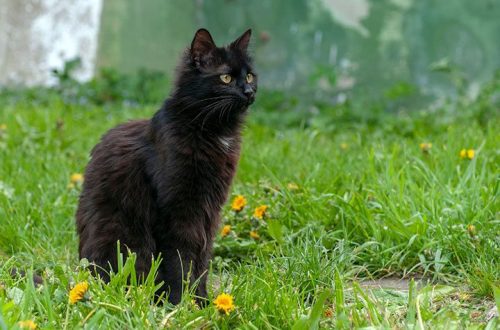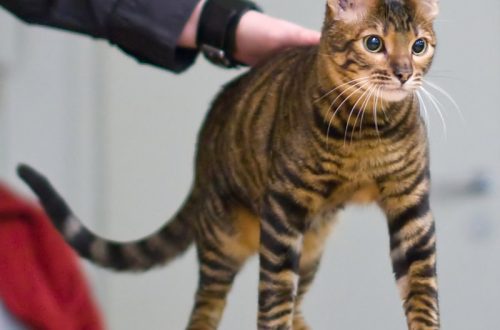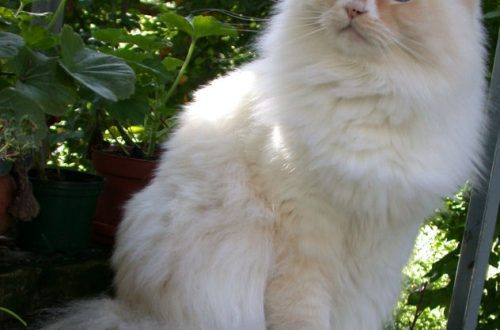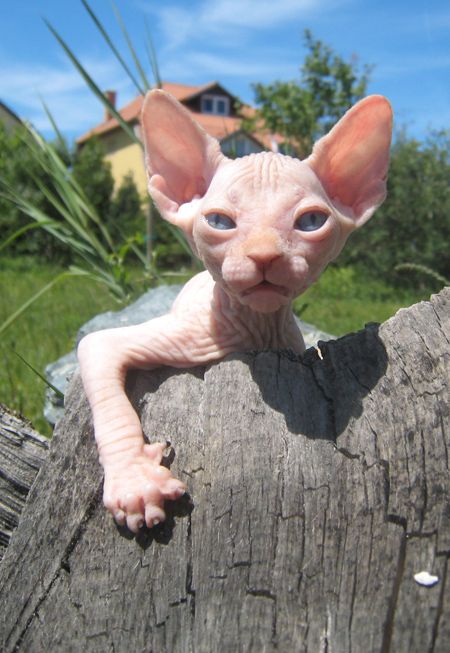
Canadian Sphynx
Other names: sphinx
The Canadian Sphynx is a pet that leaves no one indifferent due to its unusual appearance. Someone considers them unpleasant and even repulsive, while someone simply does not have a soul in these “unearthly” creatures.
Contents
- Characteristics of Canadian Sphynx
- Basic moments
- History of the Canadian Sphynx breed
- Video: Canadian Sphynx
- Appearance of the sphinx
- Photo of the Canadian Sphynx
- The nature of the Canadian Sphynx
- Care and maintenance
- Health and disease of the sphinx
- How to choose a kitten
- Photo of the Canadian Sphynx
- How much is the Canadian Sphynx
Characteristics of Canadian Sphynx
| Country of origin | Canada |
| Wool type | bald |
| Height | 30–40 cm |
| Weight | 3–5 kg |
| Age | 10–17 years old |
Basic moments
- In the world, the breed is known simply as Sphynx – a sphinx, in Russia the adjective “Canadian” is added to avoid confusion with the Don and St. Petersburg (Peterbald).
- Contrary to popular belief, sphinxes are not hypoallergenic, since unpleasant symptoms in people prone to allergies are caused not by wool, but by components of saliva and sebum secretion.
- Cats are famous not only for their unusual appearance, but also for their incredible affection for their owners, they love attention and affection, and they can hardly endure loneliness.
- They need regular and thorough care, protection from adverse environmental factors.
- They get along well with other cats and even dogs, but a second representative of the same breed will be an ideal companion.
- Preferably home content of sphinxes.
- Excellent appetite is compensated by a fast metabolism.
- The average life expectancy is 10-14 years, although long-livers are also known, whose age was 16-19 years.
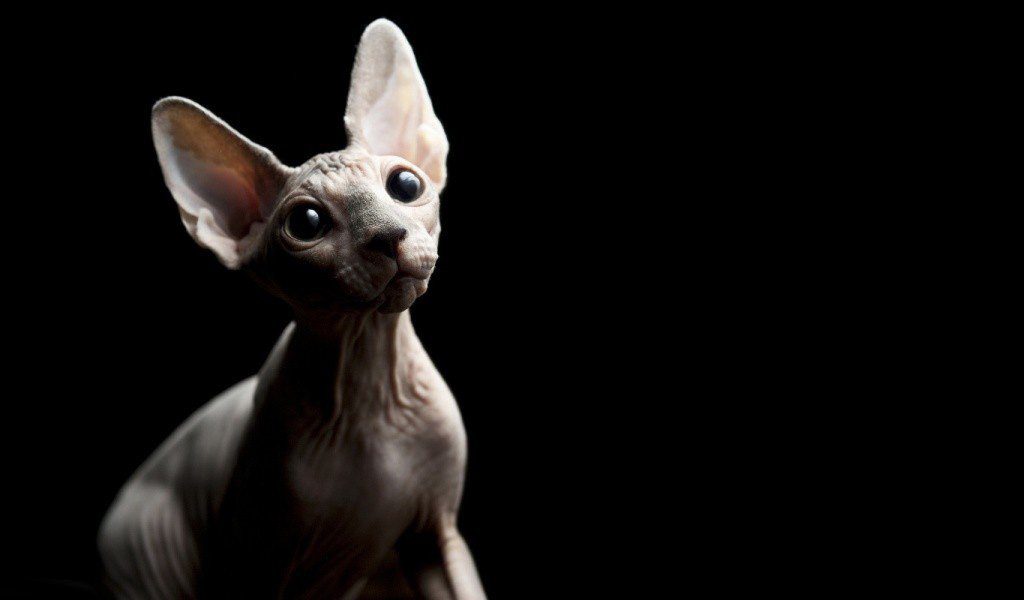
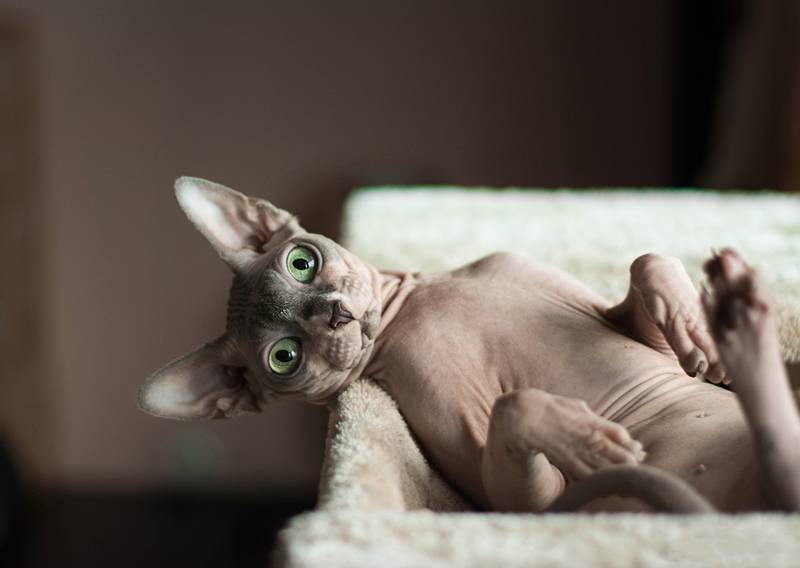
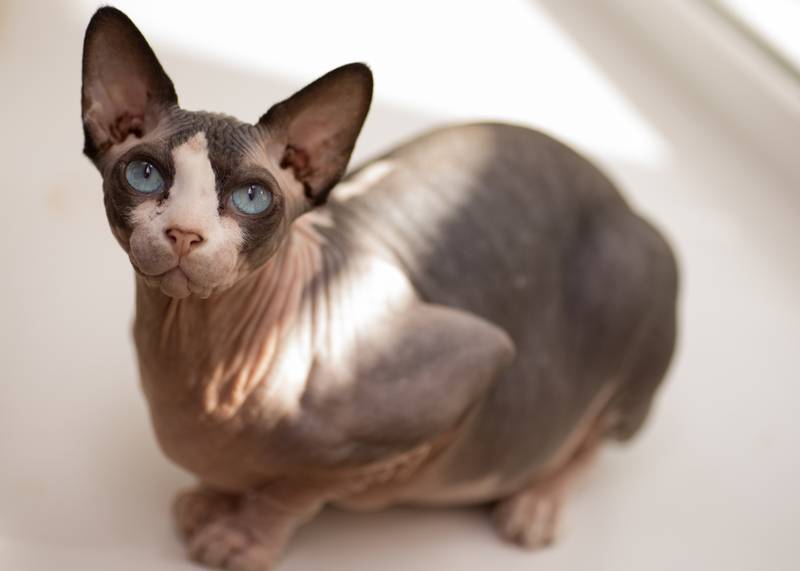
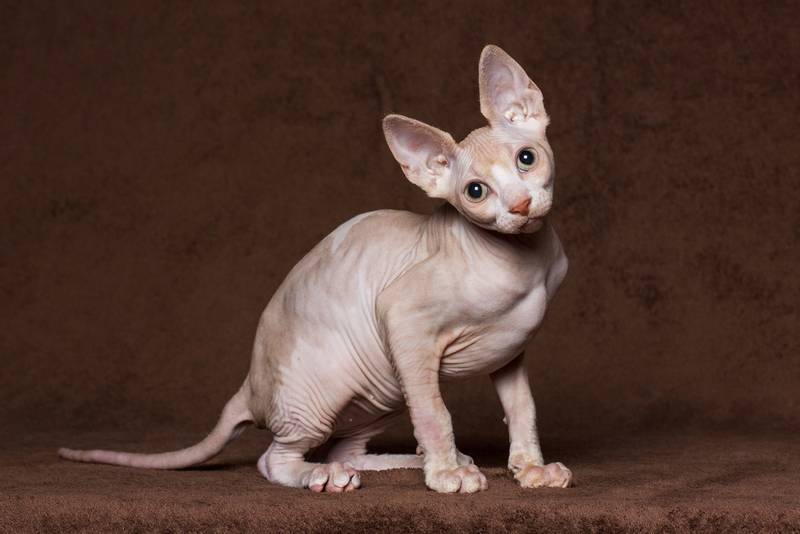
The Canadian Sphynx is a loving and sociable pet that easily wins the hearts of people who are not indifferent to cats. The owners of these animals unanimously say that they would never exchange them for representatives of other breeds. For large ears, expressive eyes and skin folds on the muzzle, sphinxes received the affectionate nickname “aliens”.
History of the Canadian Sphynx breed
Although the breed is quite young, the existence of hairless cats is mentioned in the annals of various civilizations. The thing is that “bald” offspring can appear in completely ordinary parents as a result of a natural mutation. Most often, such animals were considered an anomaly and discarded by humans.
There is evidence of the emergence in South America of a whole population of graceful creatures with amber-colored eyes. True, unlike Canadians, they could be partially covered with wool during the cold season, and mustaches were worn all year round. It is impossible today to judge the genetic characteristics of these animals, since the breed has disappeared. The last individuals, the existence of which is documented, lived in the 20s of the last century, but then the “Inca cats”, as the Mexicans called them, were not interested in professional breeders.
40 years have passed, and far to the north, in the Canadian province of Ontario, the owner of a black and white shorthair cat named Elizabeth was surprised to find an unusual specimen in her pet’s litter. The kitten was given the name Prune (Eng. Prune – Prunes) and, upon reaching maturity, they crossed with their own mother. The first experiments seemed successful, but already in the early 1970s the line was interrupted.
Around the same time, a new stage in the history of the breed began. In one of the catteries of Baden, Minnesota, there were two cats deprived of fur at once. All modern elite lines lead from them, although in the selection process, of course, there were cats of different breeds. The best results were obtained by working with the Devon Rex, actively participating in the creation of the breed and newly discovered “naked” kittens from their northern neighbors. Initially, they were called “Canadian hairless cats”, but enthusiasts wanted something more sonorous and drew parallels with the oldest surviving monumental sculpture – the Egyptian Great Sphinx, which guards the rest of the ancient rulers in Giza.
The recognition of international felinological organizations did not come immediately. There were fears that the mutation provoked serious health problems. When time showed the inconsistency of these theories, the first to participate in their exhibitions of sphinxes was allowed in 1986 by The International Cat Organization (TICA). After 6 years, the champion status was received from the Canadian Cat Association (CCA), but the breed standard according to the authoritative The Cat Fanciers’ Association (CFA) was approved relatively recently, in 2002.
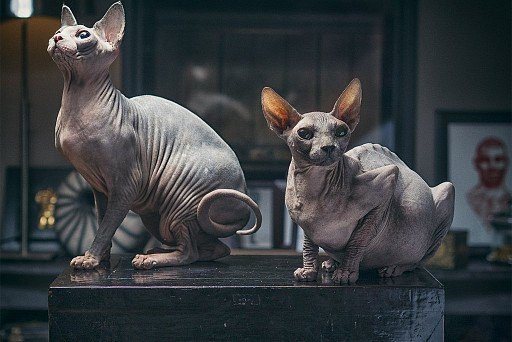
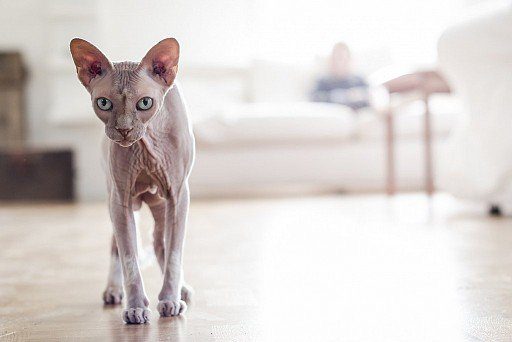
Video: Canadian Sphynx
Appearance of the sphinx
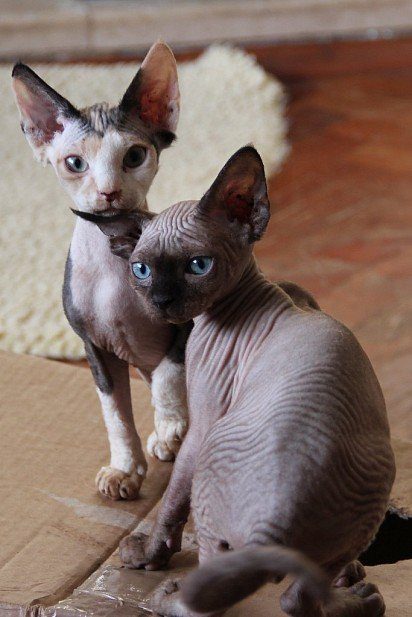

Sphynx are not among the large breeds. Females usually weigh 3.5-4 kg, the weight of males varies between 5-7 kg. At the same time, the body is muscular and dense, because cats really turn out to be heavier than you might expect for their size. The skin is thick and gathers into characteristic folds, especially pronounced on the muzzle.
Head
Medium in size, shaped like a slightly rounded modified wedge, where the length is slightly greater than the width. The forehead is flat, the transition from it to the muzzle can be either quite soft or pronounced. The muzzle is short. The cheekbones are high and well defined. The chin is strong, forms a perpendicular with the upper lip. The nose is short, with a slight or medium stop. The whisker pads are well developed, although the whiskers themselves are completely or almost completely absent.
Ears
Ears are one of the hallmarks of the Canadian Sphynx breed. They are very large compared to the head. Upright and open. The base is wide. The inner surface is without wool.
Eyes
The eyes of sphinxes are large, shaped like a lemon, because with a wide middle part they narrow equally on both sides. Set wide and slightly slanting. The color is not regulated, but must be in harmony with the color.
Neck
Medium length, slightly arched, well muscled.
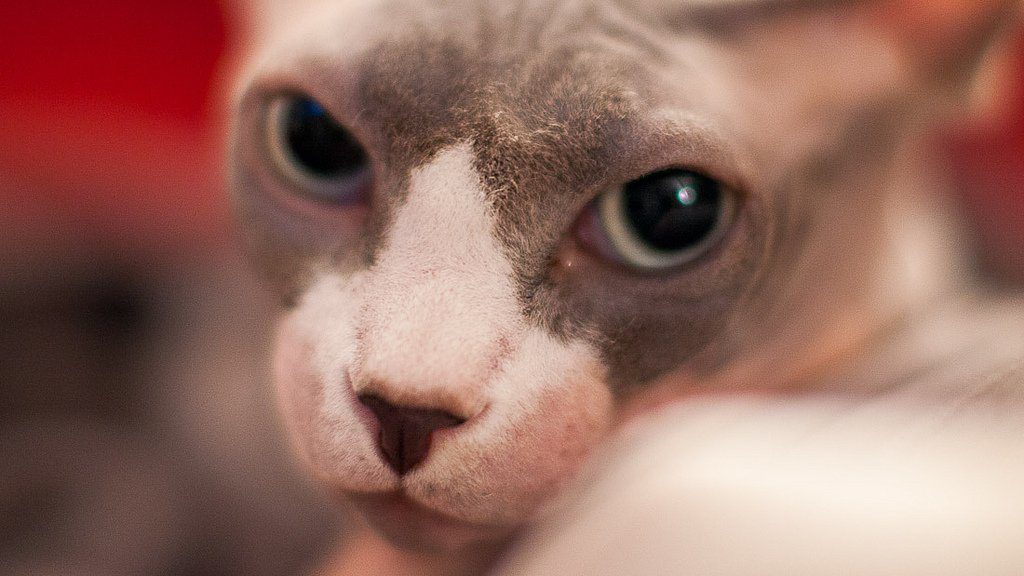

Body
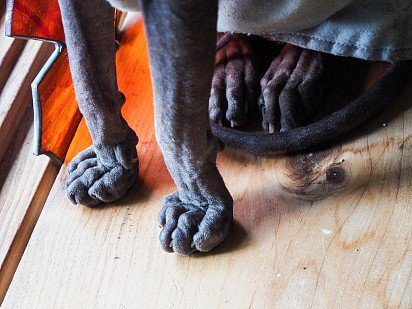

The body of the sphinx is of medium length, muscular. The chest is wide and rounded. The abdomen is round and full. The back of the body is rounded.
Legs
Medium length, in proportion to the body. Strong and muscular. The back is slightly longer than the front.
Paws
Oval, with thick pads and well developed long toes.
Tail
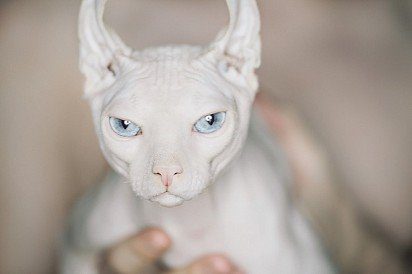

The length of the tail of the Canadian Sphynx is proportional to the body. Graceful and flexible, gradually tapering from base to tip.
Cover and skin
The skin of the Canadian Sphynx is thick, forms folds, which are especially numerous on the muzzle and legs. They seem completely hairless, but usually the body is covered with delicate fluff (a length of no more than 2 mm is allowed). The presence of short sparse hair on the outside of the ears, tail, between the fingers and in the scrotum area is considered the norm. The bridge of the nose is covered with the usual short hair for cats.
Color
Despite the lack of wool in the usual sense, sphinxes have many colors: white, black, red, chocolate, lilac (lavender), tabby, tortoiseshell, two-color, calico (tri-color), color-point, mink. None violate the CFA standard.
Photo of the Canadian Sphynx
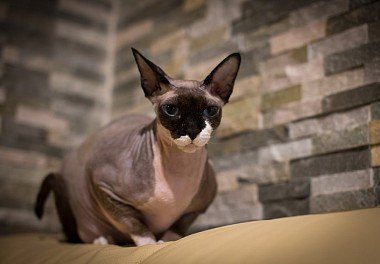

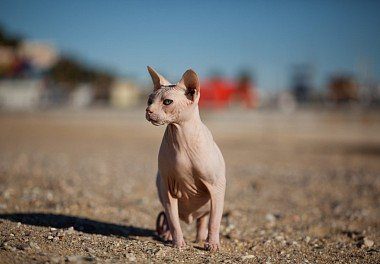

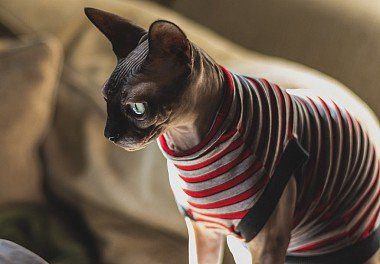

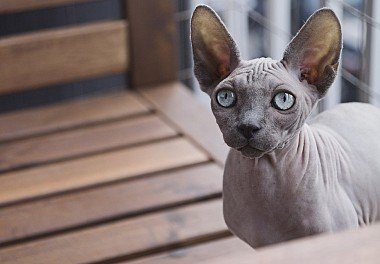

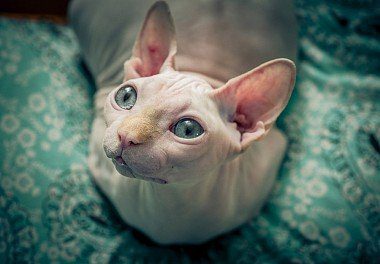

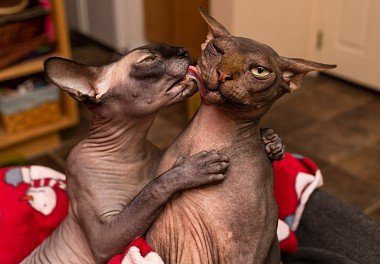

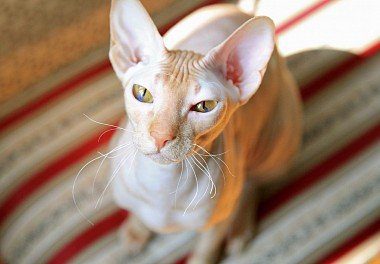

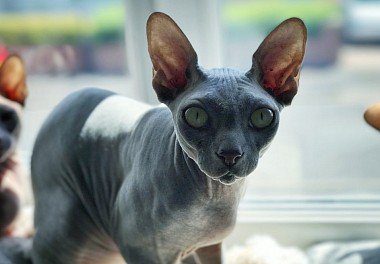

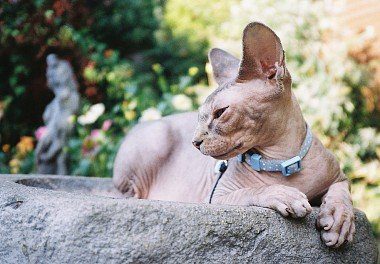

The nature of the Canadian Sphynx
Lost in the African sands, the ancient sculpture of a lion with a human head was once called by Arabic speakers differently – Abu al-Khaul, that is, the Father of Horror. But her little namesakes do not seem intimidating to their owners at all. These are real “tails” that will follow a person everywhere and will not miss the opportunity to sit on his lap.
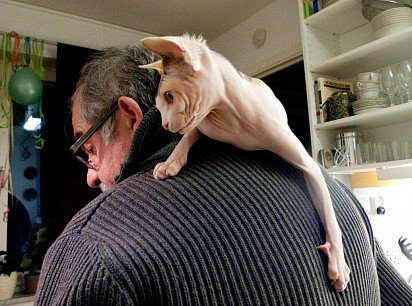

However, such affection is not at all an indicator of laziness. Sphynxes are very mischievous and playful creatures, they get involved in active fun with great excitement or independently invent entertainment for themselves, such as “hunting” for a beetle that happens to be in the apartment. Games should be versatile and challenge not only agility and muscle strength, but also intelligence.
Sphinxes do not tolerate loneliness well, which should be taken into account by potential owners whose work is associated with frequent and long business trips. Canadians are attached not to a place, but to “their” people, so separation is a difficult test for them, even if in your absence pet care is entrusted to reliable and kind hands.
Sphynxes are absolutely not aggressive, so they get along with children of different ages without any problems and calmly share their home with other pets. Moreover, they know how to be friends with both cats and dogs, which helps to brighten up the long hours of waiting for a meeting with a person.
Representatives of this breed quite easily get used to being in a large crowd of people. Thanks to this, sphinxes feel good at exhibitions, and some bring the skill of equanimity to such a level that they become real movie stars. The most striking example of this is Ted Nugent, who played the role of Mr. Bigglesworth, Dr. Evil’s cat from the famous Austin Powers film series.
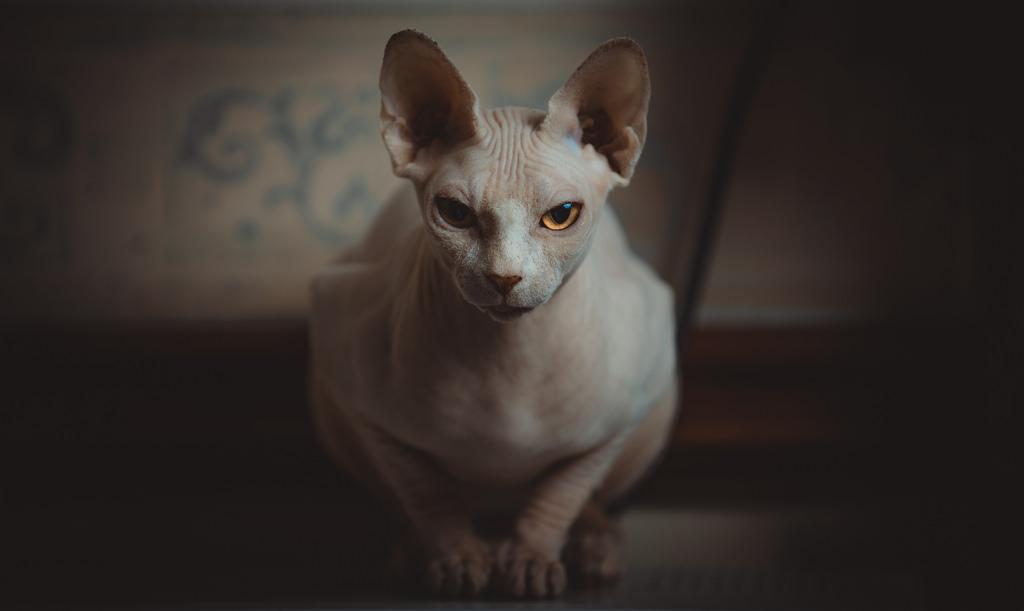

Care and maintenance
Lack of hair may seem like a big advantage to a busy owner, but in fact, sphinxes require even more thorough care than their furry counterparts. The sweat and sebaceous glands of these cats work in a “normal mode”, so a kind of plaque forms on the surface of the skin, which provokes the appearance of greasy stains on the clothes of the owners, bed linen and furniture upholstery.
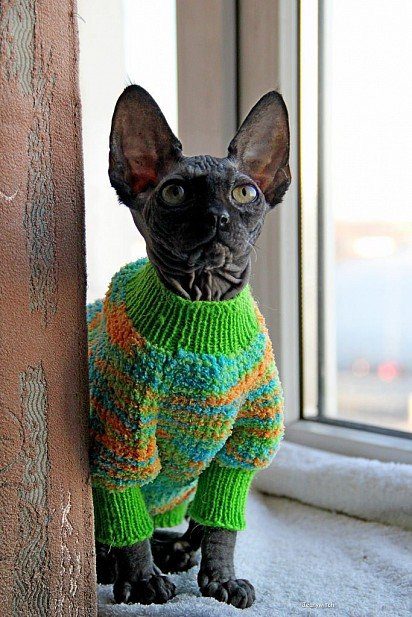

To avoid this, hygiene procedures should be carried out regularly. Someone thinks: it is enough to wipe the cat’s body with wet wipes that do not contain alcohol and flavors. But most agree that weekly bathing with special soft products or baby shampoo is the best solution to the problem. If you teach a kitten to them from an early age, the process will occur quickly and without much hassle. Please note that immediately after the bath, the sphinx must be wrapped in a towel!
The issue of hypothermia is generally quite acute for representatives of this breed. When you hold a hairless cat in your arms, it seems really hot. The fact is that due to the lack of a fur “buffer”, heat exchange with the external environment is much more active in them than in other animals. This means that in a cool room the sphinx will freeze no less than a naked person, so buying special clothes for winter and off-season will not be superfluous even for permanent residents of city apartments.
By the way, experienced breeders recommend exclusively home keeping of Canadian Sphynxes. If you consider it necessary for your pet to be outdoors, it is better to limit its duration and keep an eye on the cat at all times. Walking on your own is contraindicated not only because of the risk of colds or sunburn (yes, sphinxes can tan and burn, so they need sunscreen in summer!). Due to the characteristic appearance, it is easy for even a non-professional to recognize in your pet a purebred, and therefore potentially expensive animal, which can lead to abduction.
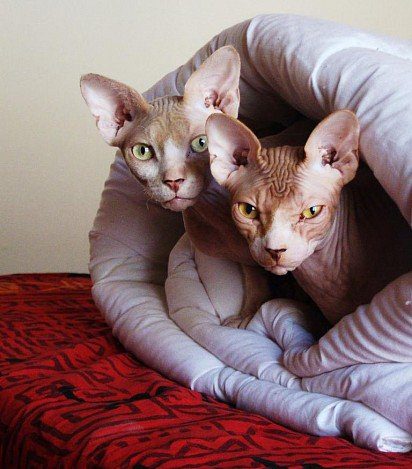

Other care tips differ little from the standard ones. It is important to monitor the condition of the eyes and ears to avoid infections. Regular brushing of teeth with a special toothpaste guarantees protection against tartar, and clipping of claws will help keep your furniture and walls in their original state.
The cat will be grateful for a personal “house” with the ability to climb higher and play hide and seek, but most sphinxes prefer the owner’s bed to a soft couch, where you can comfortably sit under a warm blanket.
All sphinxes have excellent appetite. This is another side effect of being hairless, as they require more energy than other cats due to their intense heat exchange. The main thing is that the quality of food is at a high level and fully satisfies the needs of your pet in proteins, fats, carbohydrates, vitamins and minerals. The easiest way to achieve this balance is with specialized premium and super premium foods. But if you’re willing to take the time to put together a healthy food menu, organic food is a viable alternative.
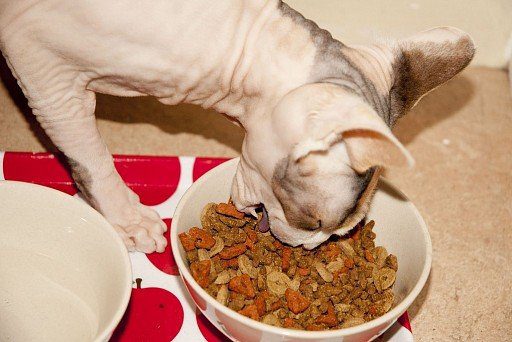

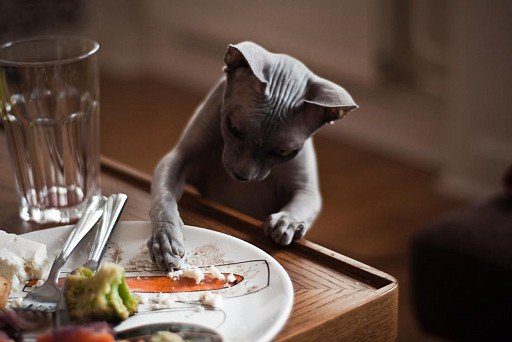

Health and disease of the sphinx
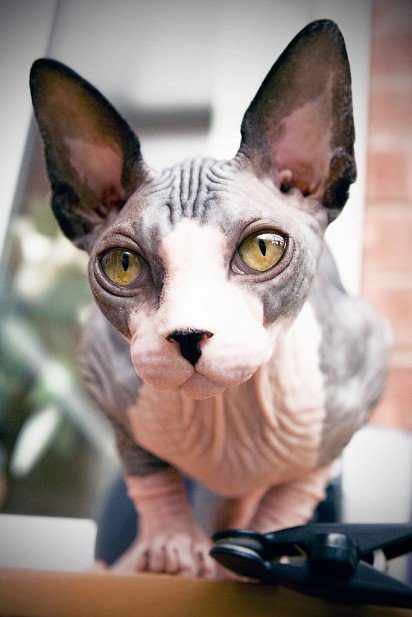

In general, with the right diet and proper care, sphinxes are infrequent patients in veterinary clinics. Problems can provoke hypothermia, prolonged exposure to the sun, neglect of hygiene rules on the part of the owners, lack of immunity due to missed vaccinations.
But there are also breed-specific diseases. The weak point of Canadians is sensitive skin, it can be affected by urticaria pigmentosa. Redness and a rash on the body can also be symptoms of allergies, including food. Only a doctor can determine the exact cause and prescribe treatment based on the results of the tests.
Like Maine Coons, Sphynx cats suffer from hypertrophic cardiomyopathy. This dangerous heart disease is caused by a genetic mutation, but to date there is no convincing evidence that heredity has a decisive influence on its development.
And here is another disease of sphinxes, myopathy, is transmitted to descendants from parents. They got it in the process of selective work with the Devon Rex. Progressive muscle dysfunction has no cure, progresses individually, and often leads to death as a result of laryngospasms. It usually appears at 4-7 weeks of age, but may be asymptomatic until 12-14 weeks of age. The cattery must warn you if the kitten is at risk.
How to choose a kitten
The main advice is the same for all purebred animals: do not try to save money on a purchase by going to the “bird market” or responding to a random ad. Only the best catteries and breeders with an impeccable reputation guarantee that you will get a healthy pet, the origin of which is not in doubt. After all, the Canadian Sphynx is not just a lack of hair, but a graceful, beautifully built, affectionate and intelligent creature that will live next to you for the next few years.
If you do not plan to participate in exhibitions, it is enough to make sure that the chosen baby is healthy and active, easily makes contact with a person, without showing fear or aggression. The rest will be prompted by the available documents (pedigree, veterinarian’s conclusion, vaccination card). We recommend that you get to know the parents and look at the conditions of detention – they will say a lot about the breeder’s attitude towards cats.
Photo of the Canadian Sphynx
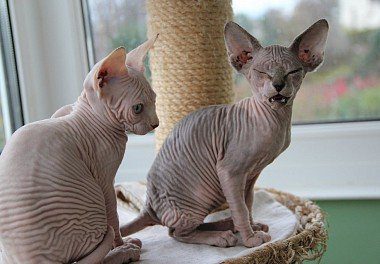



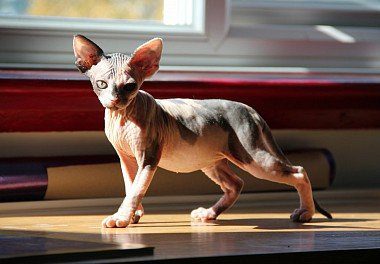

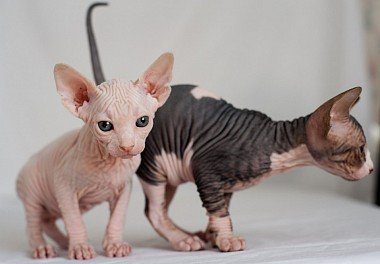

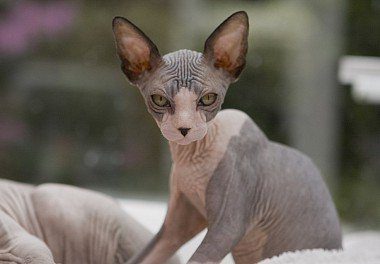

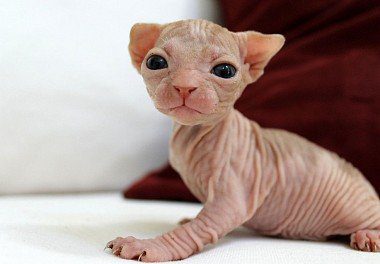

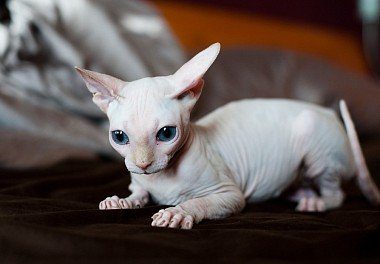

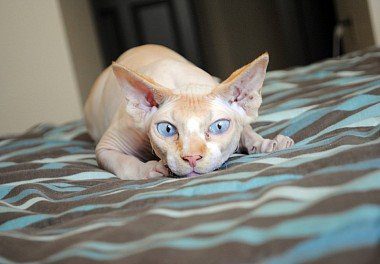

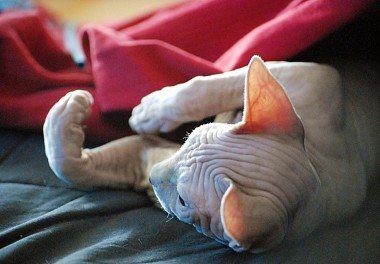

How much is the Canadian Sphynx
If you are offered to buy a Canadian Sphynx kitten for 70-90$, you can be sure – there can be no question of any pedigree here.
The price of kittens in proven nurseries starts from 80-100$. Cheaper are babies who have more or less significant deviations from the breed standard. They are perfect for those who dream of a pet with an unusual appearance and signature “Canadian” character.
Prospective exhibitors, whose parents can boast of champion titles and other titles, will cost their future owners at least 250$.





